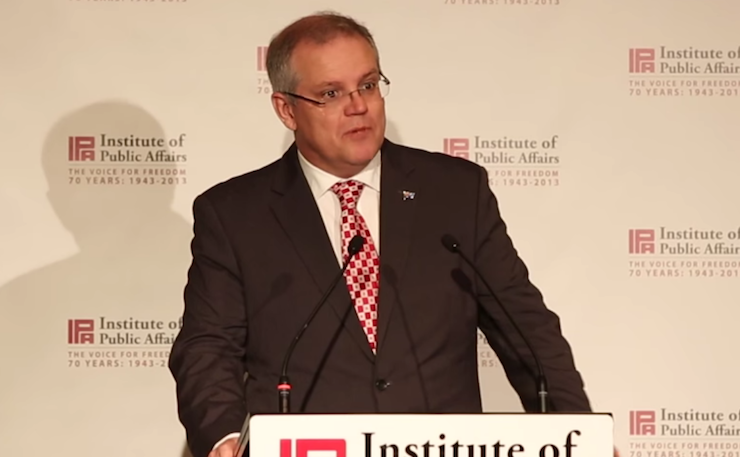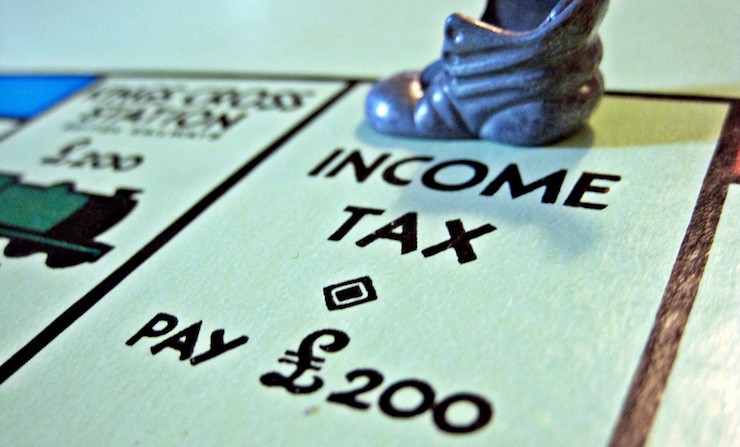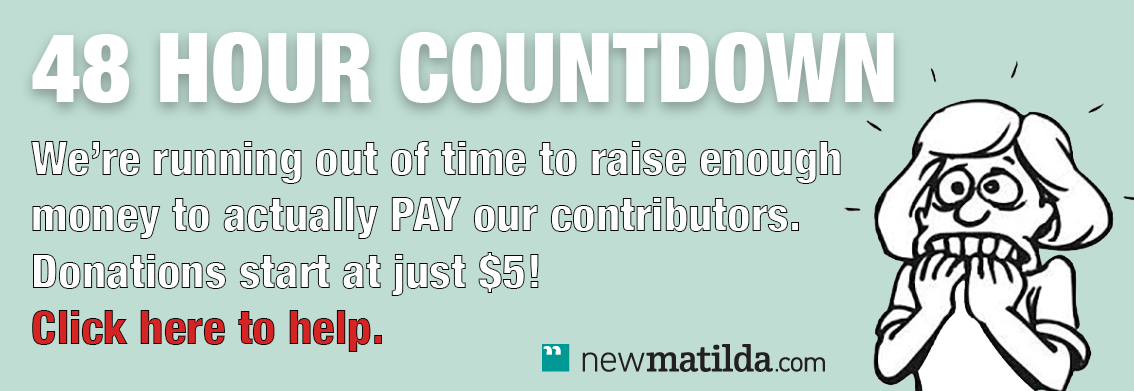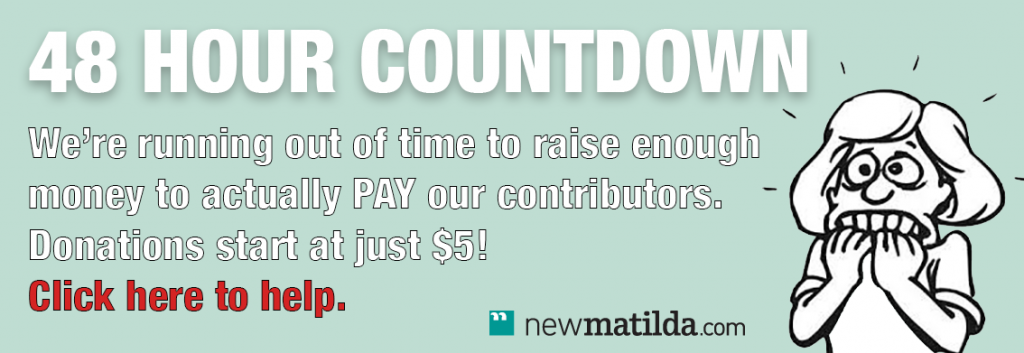Both Labor and the Coalition appear divided on tax reform, revealing two separate but related problems with the policy status quo, writes Ian McAuley.
The mainstream media thrive on squabbles in political parties, and both the Liberal and Labor Parties are feeding them stories of conflict and division.
The Liberal Party is polarising into two camps, one of social conservatives coalesced around Tony Abbott and a more liberal grouping coalesced around Malcolm Turnbull. Because these groups have fundamentally different ideologies they have much more potential for disruption than the power struggles that characterised the Rudd-Gillard Government.
The Labor Party conflict over GST, between South Australia Premier Jay Weatherill and Labor Deputy Senate Leader Stephen Conroy, is about more mundane federal-state issues. Wetherill wants more revenue, Conroy wants to be in an election-winning team, and conventional wisdom suggests that it’s hard to win an election while promising to introduce new taxes, particularly consumption taxes.
There are two related but separate matters in this conflict. One is whether Australia should be raising more public revenue; the other is about what, if any, changes there should be to our tax mix.
We have a revenue problem, not a spending problem
On the first matter Treasurer Scott Morrison has persistently asserted that any tax changes should be “revenue neutral”: that is, any increases in some taxes should be offset by decreases in other taxes. He acknowledges that the federal budget has a cash deficit, with no prospect of a return to surplus before 2021–22, but insists that closing the deficit should be through cutting expenditure rather than raising revenue.
Morrison, like many in his party, holds as a matter of faith the idea that small government is good government, and after criticising Labor for its spending is now embarrassed by his own government’s rhetoric because Commonwealth spending, at 25.9 per cent of GDP, is now higher than the average 25.0 per cent over Labor’s six years in office. His obsession is to keep expenditure well below 26.0 per cent of GDP.
But there is no logical ground for this arbitrary limit. Among prosperous countries Australia has one of the smallest public sectors. At around 37 per cent of GDP (26 per cent Commonwealth, 11 per cent state and local), our public expenditure is way below the OECD average of 45 per cent of GDP, and even further below that of northern European countries where public expenditure is around 50 per cent of GDP.
As Miriam Lyons and I explain in our work Governomics: can we afford small government?, there is no intrinsic virtue in “small government”. There is no relationship between the “size” of government (however measured) and indicators of economic success, such as GDP growth and international competitiveness.
What counts is how well the public sector performs and there is no more economic justification in a thoughtless preference for the private sector than there was for a preference for the public sector under Soviet central planning. Markets do best in some situations, governments do best in others. Our ramshackle telecommunications and transport infrastructure, our slipping education standards relative to those of our competitors, and our over-stressed hospitals are all reminders of the economic cost of “small government”. Taxes, Oliver Wendell Holmes said, are the price we pay for civilization, and we’re short-changing ourselves.

But those purporting to speak for “business” interests (an absurd construction because there is no homogenous set of “business” interests), parrot Morrison’s “revenue neutral” line, pushing for a rise in the GST to fund cuts in corporate and personal taxes. They suggest, without much specificity (because that would require them to expose their reasoning), that such cuts would be good for the economy.
The most common argument, usually accepted uncritically by journalists, is that at 30 per cent our corporate tax rate for large businesses is high by world standards. At face value that is right but it overlooks the fact that Australia, almost alone in the world, has dividend imputation, crediting shareholders with imputed company tax in their dividends. A company paying half its profits as dividends, therefore, has only a 15 percent effective tax rate, one of the world’s lowest.
Of course imputation does not benefit foreign investors, but even with our supposed high tax rate we attracted what, in hindsight, was an excess of foreign investment in mining, destabilising our exchange rate, scattering the landscape with abandoned holes in the ground, and leaving us with huge foreign liabilities.
As for personal tax cuts, there is some evidence that high effective marginal tax rates deter some people on low incomes from entering the workforce, but that’s not what the “business” lobby talks about. They are looking at the other end of the income scale.
While lower taxes may provide incentives for some on high incomes, they have the opposite effect for others who set themselves an income target and take the benefit of lower taxes in terms of less work effort. (Economists know this phenomenon as the “backward-bending labor supply curve” – but it rarely makes it onto the curriculum of business schools.)
Then there is the argument that, in comparison with other countries, we collect a disproportionate share of our public revenue through personal income tax. That’s right, but only because our total public revenue is so low. As a share of GDP our personal income tax is about in line with other countries.
States need money, but we can do better than raising the GST
That brings us to Wetherill’s situation – a situation faced by all state (and territory) governments.
States find it tough sustaining government services, particularly health and education, which take around 60 per cent of their budgets and, being intrinsically labour-intensive, do not allow for easy productivity improvements.
The GST, when introduced by the Howard Government in 2000, served two purposes. First, it replaced the old wholesale sales tax – a tax that distorted resource allocation, and which had no less unfairness than the GST ultimately negotiated through the Senate. State governments were on board because the deal was that it would pass through to the states, and it was seen as a growth tax.
Over the last 15 years, however, it has not lived up to its promise. At the outset is was calculated to raise about 3.7 per cent of GDP but, largely because expenditure on exempt items (fresh food, education etc) has risen faster than expenditure on non-exempt items, it now raises only around 3.3 per cent of GDP – a difference of around $6 billion a year. This reduction in state revenue is in addition to the massive Abbott-Turnbull cuts in education and health funding.
Weatherill’s voice for a better tax deal has been the strongest because South Australia, with its low housing prices, has not shared the strong boost in stamp duties and land taxes enjoyed by other states. Also, it is easier for a Labor premier than a Coalition premier to counter the Morrison orthodoxy of “revenue neutrality”. Mike Baird’s proposals for a higher GST with much of the extra revenue going to corporate and personal tax cuts is much closer to the Morrison line.
Unfortunately, the public presentation of the tax debate has become one about the GST, rather than one about the broader question of raising revenue.
The GST has its attractions, in that it picks up revenue from those who would otherwise be lightly taxed, particularly so-called “self-funded” retirees. And because it is directed to state governments the inequities in its collection are offset by the distributive benefits in spending on health care and education. (I outlined these attractions in a conference paper in late 2013.) On the basis that 10 per cent GST presently raises about $58 billion annually, an increase to 15 per cent (assuming no “elasticity” effects) would raise another $29 billion.
But quite apart from the equity issues in raising the GST, there are significant problems in such an increase, because it would sharpen the incentives for avoidance and clever accounting in firms handling a mix of GST-free and taxed products – think of your average supermarket. Its high rate would distort people’s consumption decisions, re-introducing the very problems we had in the old paternalistic wholesale sales tax. The “neutral” alternative, of eliminating exemptions also has problems, particularly when it comes to in-kind government services such as health care, and it would be even more regressive than a rise to 15 per cent.
The main problem with a rise in the GST is that, because it would be regressive, it would inevitably require a significant proportion of the revenue collected to be directed to compensation for those most heavily disadvantaged, thereby limiting what is available to fund government services. In other words it would be inefficient and add to churning of revenue through the tax and welfare system.
It would be far better to raise revenue through getting rid of inequitable and distortionary tax breaks, thereby improving equity and doing without the need for compensation.
In this regard there are plenty of options. Various forms of wealth taxes, including inheritance and land taxes, should all be on the table – the GST is not the only way to tax wealthy retirees. Australia stands out for having a huge range of personal income tax concessions, particularly on superannuation, and low rates of capital gains tax for short-term speculation (but high capital gains taxes on long-term investment). According to the Commonwealth’s “Tax Expenditure Statement” released last Friday, superannuation and capital gains tax concessions alone cost the budget $90 billion a year. My colleague Jennifer Doggett and I have calculated that subsidies to private health insurance are costing the budget $11 billion a year. And they’re only the big-ticket items.
Those who are so keen on consumption taxes should consider consumption taxes that actually improve economic resource allocation, namely carbon taxes. The Gillard Government’s modest carbon price was budgeted to raise $6 billion a year before it was scrapped. And, while the present government has at least re-introduced indexation to fuel excise, it could go much further. Outside the oil-producing countries we have some of the world’s lowest gasoline prices, and present low crude oil prices provide an excellent opportunity to increase our fuel taxes – a modest ten cent increase in excise would raise another $5 billion a year. (Carbon taxes, like tobacco taxes, are inevitably transitional, for in the medium term, as the economy is decarbonised, revenue will fall away.)
Disappointingly, instead of a wide-ranging discussion on tax, with “everything on the table”, business lobbies and the government have manipulated it all down to a choice of a GST or nothing – in fact Finance Minister Mathias Cormann seems to be walking away from any open discussion on taxation. And it has become convenient to portray those who see problems with a 15 per cent GST as demagogues raising a scare campaign.
If Labor wants to campaign against a GST it will have to come up with creative and equitable ways to raise revenue and to secure state funding but it should be in no rush to give self-appointed business spokespeople, the Murdoch media and a politicised Treasury time to misrepresent its proposals.
Donate To New Matilda
New Matilda is a small, independent media outlet. We survive through reader contributions, and never losing a lawsuit. If you got something from this article, giving something back helps us to continue speaking truth to power. Every little bit counts.






